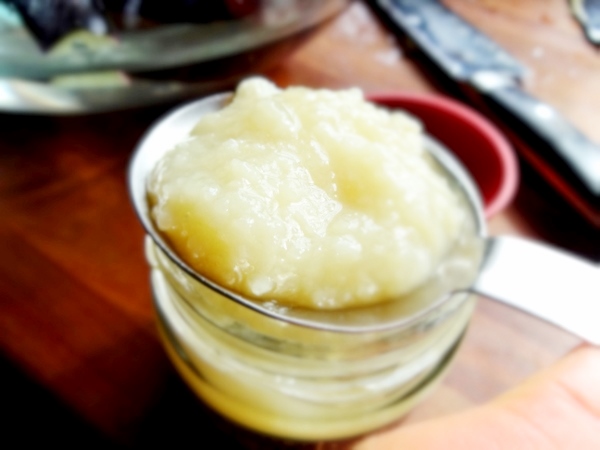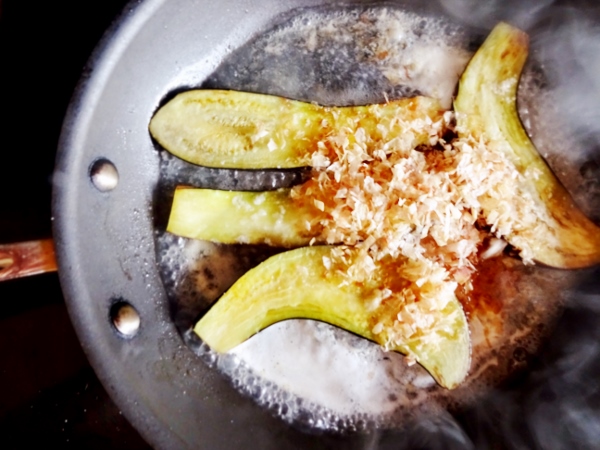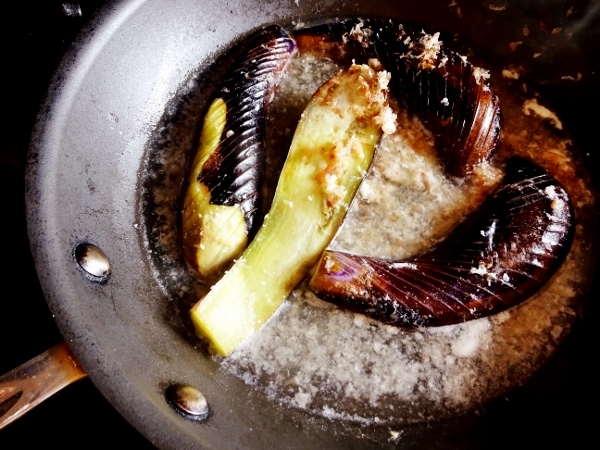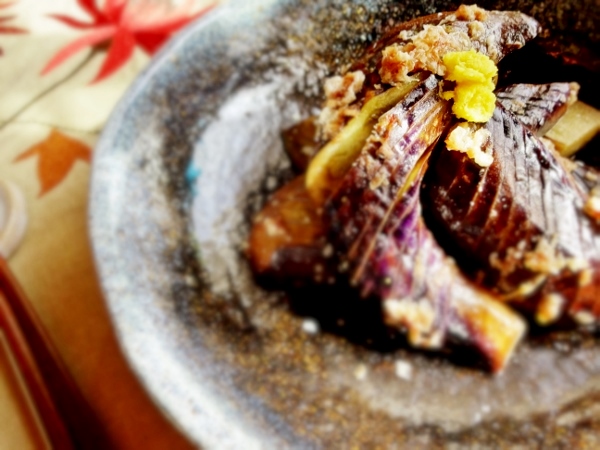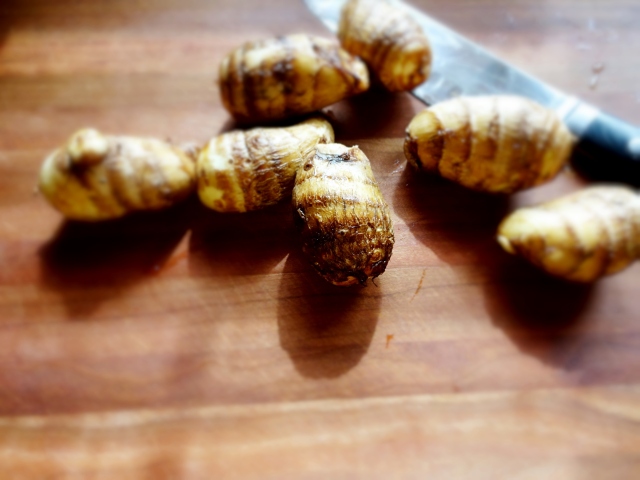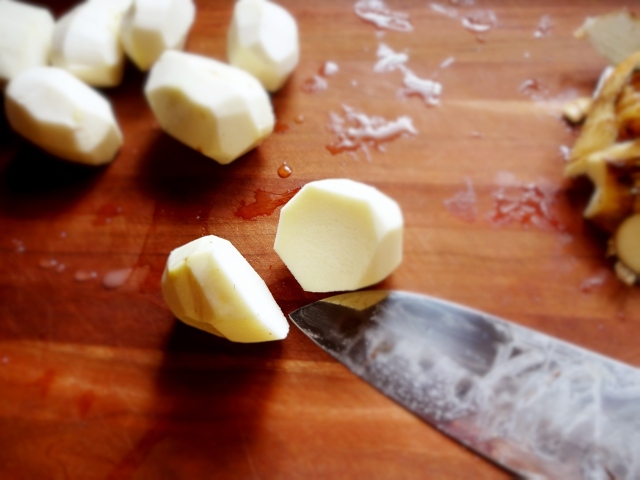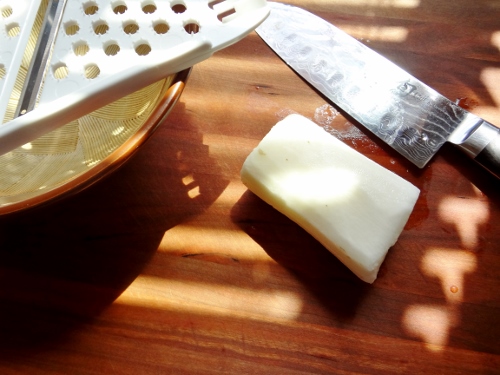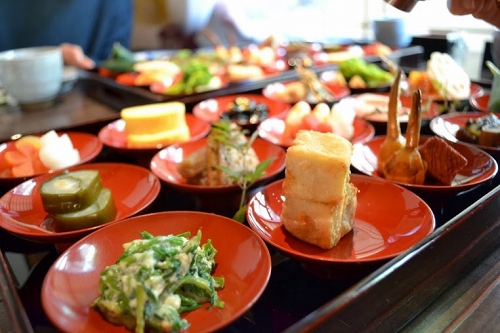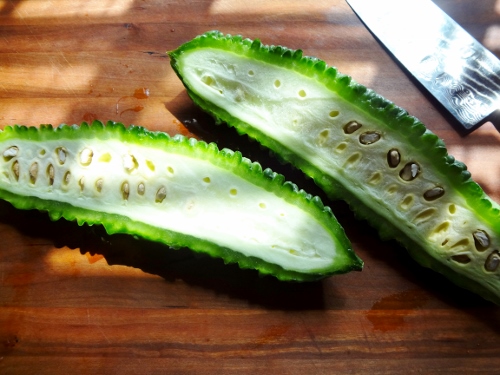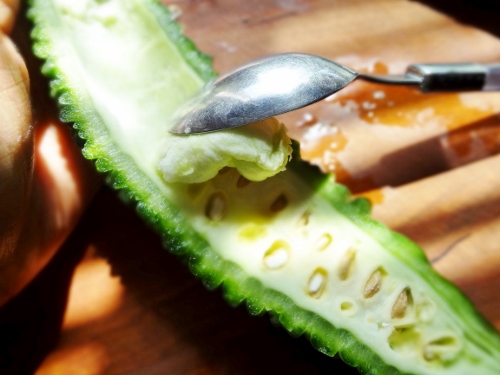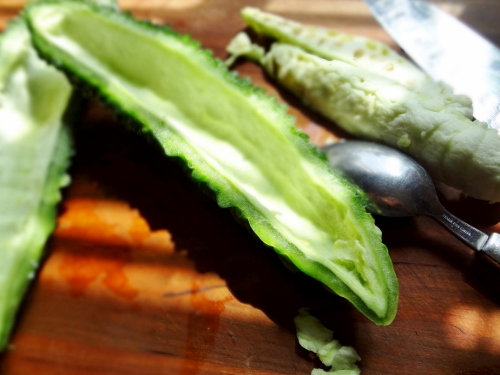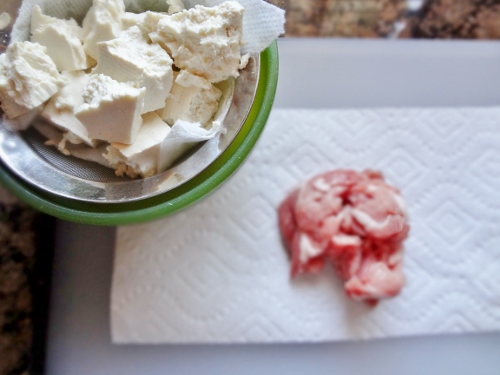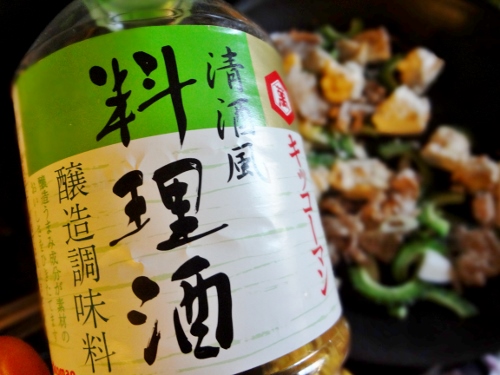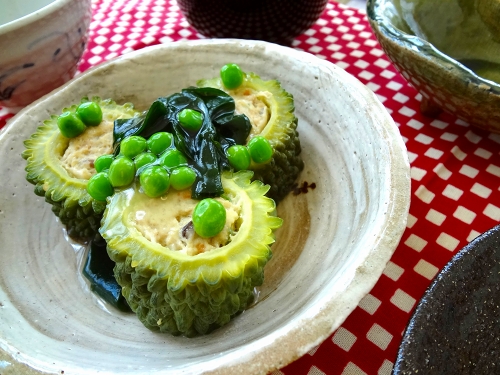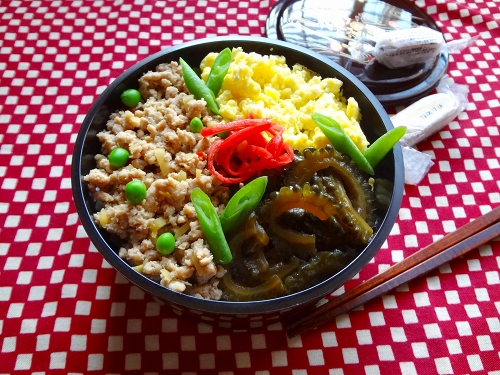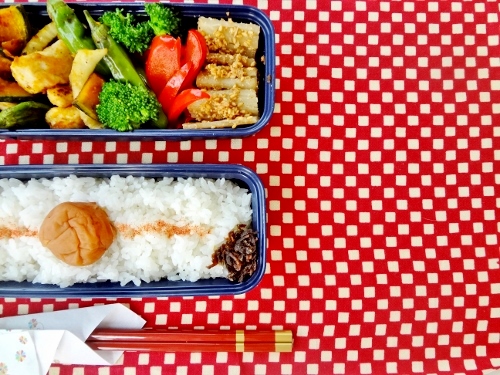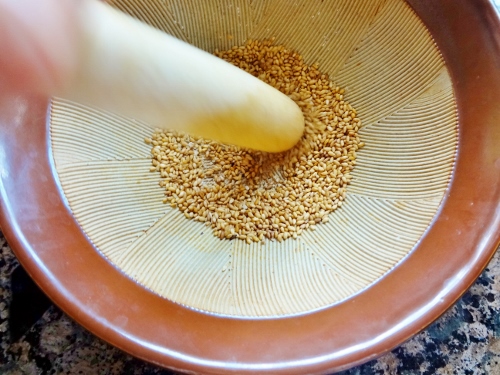When I go to the grocery store, there are certain vegetables I always purchase.
Lettuce, tomato, onion, carrot, broccoli, peppers and sometimes mushrooms and green beans.
I always see big eggplants sitting next to zucchini, but I seldom reach them.
WHY?
Because they are too big!
I think they are really good in lagsania or eggplant parmesan, but when I think about Japanese dishes, I only come up with one dish, BEINASU no DENGAKU.
We call big eggplants as BEINASU, literally means “American eggplants”.
This dish is “cooked eggplants with sweat miso sauce”. It is delicious!
Maybe I would introduce that someday!
Today I will introduce a dish using Japanese eggplants.
When I go to the farmer’s market, I sometimes find them, but it is difficult to find at regular grocery stores.
Japanese eggplants are relatively small like Italian eggplants, but the shape is thinner than Italian’s.
Japanese eggplants have thin skin, so you don’t need to take off peel.
The eggplants I got this time are from Suzuki Farm, and they are gifts with purchase.
When you purchase value pack at Suzuki Farm, you could get OMAKE (small giveaway)!
How nice!
They have some scars, but they are as delicious as the regular ones.
By the way, I read an article about ugly produce.
The farmers used to compost them to landfill since they don’t look perfect and not qualified as grocery stores’ produce even though they are as delicious as the regular ones.
Some farmers started donating those ugly vegetables, or selling to the restaurants where chefs don’t care what they look because they eventually turn into soup or mashes vegetables.
I am glad to know that they are saved!
Today I would like to save this a little ugly but delicious vegetables in Japanese style.
I found this recipe in a Japanese magazine, and modified a little.
Here are the ingredients.
- 2-3 medium size of Japanese eggplants
- bonito flakes
- 2 tablespoons of shio koji
- 1 tablespoon of mirin
- 1 cup of water
- 1 small piece of ginger
- sesame oil
Let’s preparing!
Cut eggplants in half in lengthwise.
Then,,,
give slits diagonally, but not cut through.
Eggplants have some strong AKU (harshness), so once you cut them, they get easily darken and they give dish bitter taste, so put them in water for about a few minutes to get rid of AKU.
Then save them from water, and towel dry them.
Next prepare the condiments we use.
I have already introduced SHIO KOJI several times.
They are salt with fermenting koji mold, and they have lots of UMAMI.
It smells sweet and also it has a SAKE flavor.
Also we need bonito flakes to get more UMAMI into the dish.
Let’s start cooking!
Heat the pan and put generous amount of sesame oil.
As you know, eggplants absorbs oil well, so don’t hesitate ( forget about calories!).
Put eggplants.
Then flip over and cook both sides well.
Meanwhile mix shio koji and mirin with water.
Then, when eggplants are cooked,
pour the shio koji mixture and,,,,,
bonito flakes into the pan.
Then cook this for a few minutes.
THAT’S IT!
How simple is that!
Take this from heat and cool it down.
Put them in a container, and keep it in the refrigerator.
They are delicious in cold.
When you serve this, grate ginger, and put it on top of eggplants.
Eggplants and ginger are a good match.
Just grilling eggplants with soy sauce and grated ginger is also a delicious dish!
Next time when I go to the grocery store, let’s reach BEINASU (American eggplants) and cook in Japanese way.









